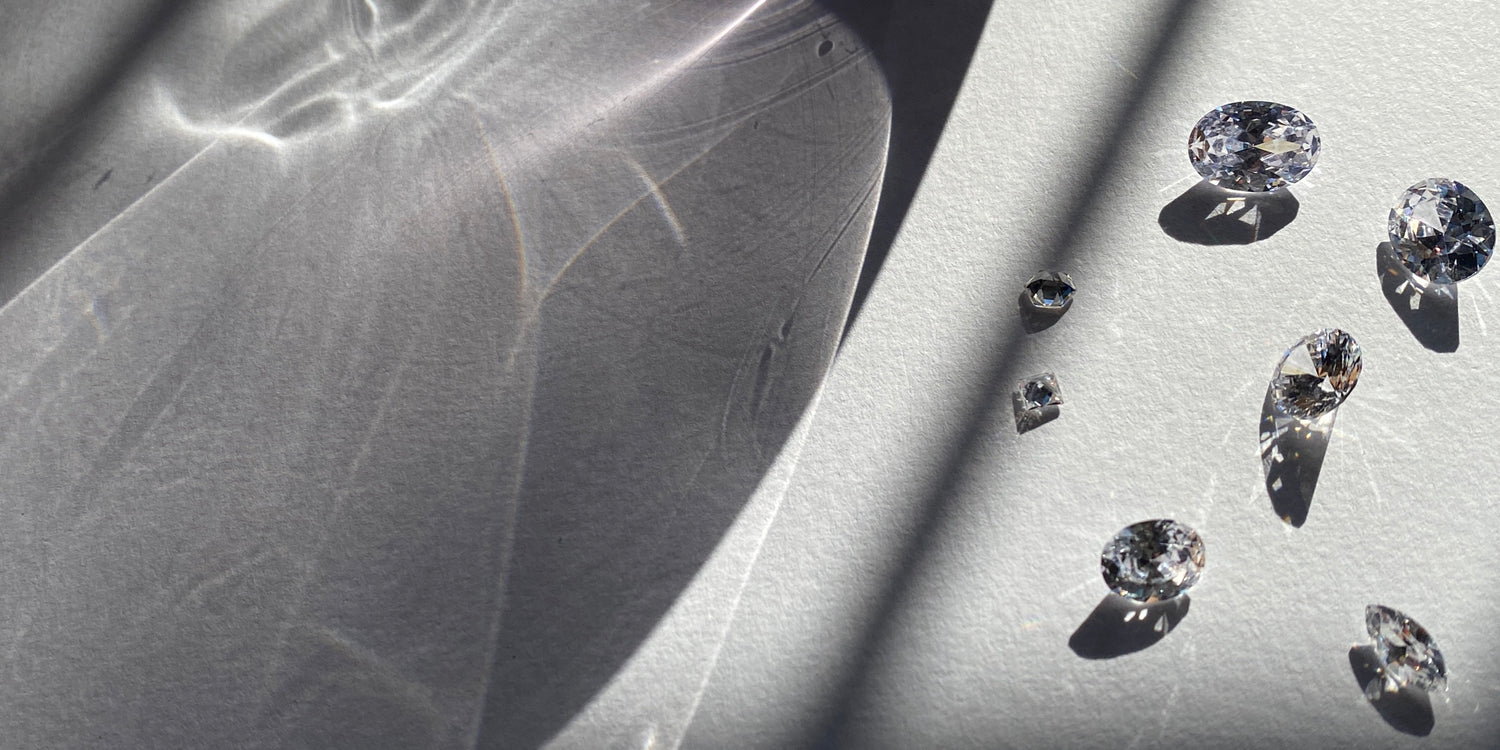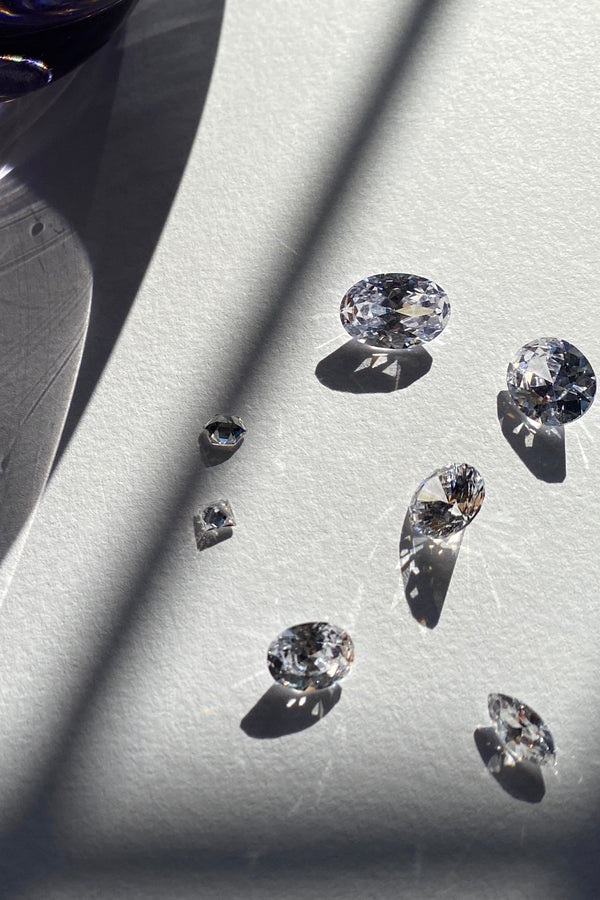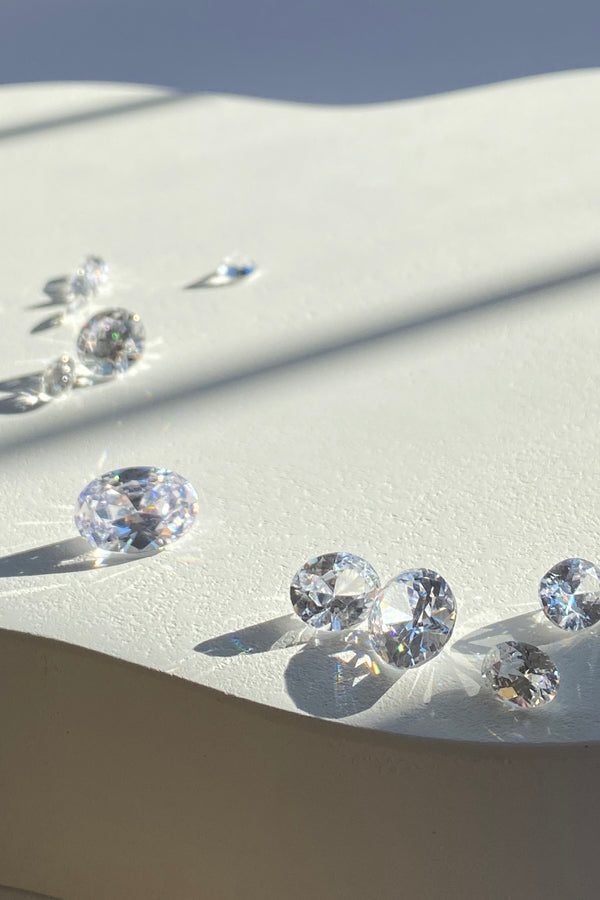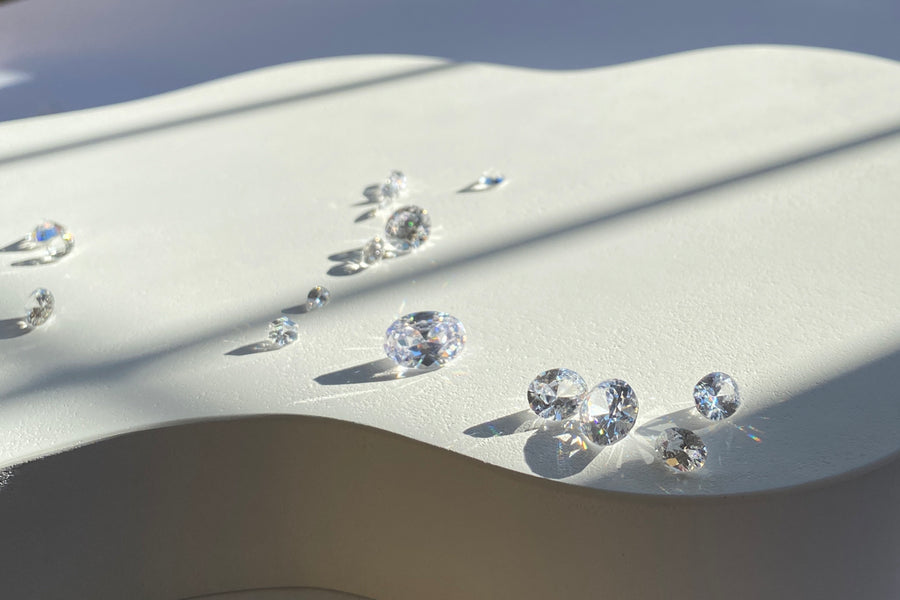Guide to The 4 C's
Understanding Diamonds: The 4 C's Explained

The 4 Cs stand for the cut, colour, clarity and carat weight of a diamond. The information for each category is detailed in the diamond grading report received when a diamond is purchased from a supplier - it is the equivalent of the survey you have done on a property before buying it. Please note that a report is not a guarantee of quality from a particular grading body, but instead details the condition of the stone at the date of inspection.
The only way for a non-expert to really decipher a good quality diamond from a poor one, is to have a line-up of a few, and see which ones appear brighter or duller than the others. The better quality ones should appear brighter, sparklier, and generally more appealing than the others. For this reason, we strongly advise seeing any diamonds you are considering purchasing in real life, rather than buying them online, and we always recommend consulting with an expert before making a purchase.
The GIA Certificate or report that should accompany your stone essentially demystifies the purchase, methodically and scientifically laying out all the information about your stone so you can understand what your money is being spent on.
Outlined on your diamond report, the 4 Cs help to align the cost that the diamond is being sold for, with the condition inspected by non-biased, neutral experts.
The GIA are the biggest standard-setting body for diamond grading in the world, they are non-profit, and created the 4 Cs grading system to help people to buy diamonds with confidence.
Each diamond bought in the UK, Europe and USA will come with an accompanying certificate or report, ideally from the GIA (although other industry bodies exist) outlining the ‘scores’ that the diamond achieves for each of the 4 Cs: cut, colour, clarity and carat.
Cut
This is widely considered to be the most important factor, and is related to the angles, proportions, symmetrical facets, brilliance, fire, scintillation and finishing details of a diamond that are achieved during the cutting process. All these factors impact how much light is reflected within the diamond and thus how much brilliance or sparkle it has. A poorly cut diamond will not sparkle or shine, and we would recommend prioritising the cut over the other ‘C’s.
The GIA grades diamond cut on the scale of Ideal, Excellent, Very Good, Good, Fair and Poor. The Ideal and Excellent grades, depending on Diamond Shape, signify proportions and angles cut for maximum brilliance and fire, eg sparkle.
Ideally look for an ‘Excellent’ cut on the diamond report, however almost 55% of diamonds bought online will have an ‘Excellent’ cut rating, and some of these appear pretty average and some incredible, so make sure you take the advice of an expert as well as always viewing the stone in real life before buying.


Colour
A diamond’s colour is graded on how white or colourless it is, with D being the most colourless, and Z being the most tinted with yellow or brown. A colourless diamond is considered the most desirable colour, and would be shown as a D on the diamond report. Basically, a clear, white looking stone is more desirable than a yellowing one.
The colour of the diamond reflects the pricing quite significantly, even though in isolation it’s very hard to determine how colourless a single stone is.
It’s good to compare against a few with the assistance of an expert and in good natural or artificial light in person (not online), yet still the difference can be hard to see with an untrained eye.

Clarity
This is how many black speckles, lines or dots there are visible in the stone. If you can see the inclusions or dull marks with the naked eye (without a magnifying device) then it could be a problem, but if it’s ‘eye clean’ then it’s probably ok. Inclusions are marked on the report so have a look and see if you can spot them: if you can’t, then the stone is considered ‘eye-clean’.
Clarity is indicated on the Diamond Report as ‘inclusions’ using the following, with FL (flawless) considered the optimal, and I2 being the worst.
- FL (Flawless)
- IF (Internally Flawless)
- VVS1 (Very, Very Slightly Included 1)
- VVS2 (Very, Very Slightly Included 2)
- VS1 (Very Slightly Included 1)
- VS2 (Very Slightly Included 2)
- SI1 (Slightly Included 1)
- SI2 (Slightly Included 2)
- I1 (Inclusions 1)
- I2 (Inclusions 2)
Sometimes the inclusions can stop the light reflecting at its best, so the stone appears less sparkly and bright. The diamond certificate or report cannot tell you if the inclusions are impacting the stone’s sparkle, so remember to always see the stone in real life and get an expert opinion.
Carat
The carat size doesn’t actually indicate the size of the diamond, but the weight. The weight needs to be properly distributed by design of an excellent cut - so depending on the diamond’s shape and how it has been cut, two 1 carat diamonds could be different sizes.
We never prioritise carat weight over the other criteria, as a smaller, excellent cut diamond can shine and sparkle much brighter than a badly cut heavier carat weight one.
Ultimately, using a trustworthy, recommended jeweller will take the pressure off, and you should trust their judgement and experience to choose the best stone for your budget. The key is finding the balance between each of the 4 Cs to work with your budget. Our advice is to prioritise brilliance and sparkle over size and weight, and always get the opinion of an expert. A beautifully cut, clean diamond will take your breath away with its sheer beauty, whatever the size.